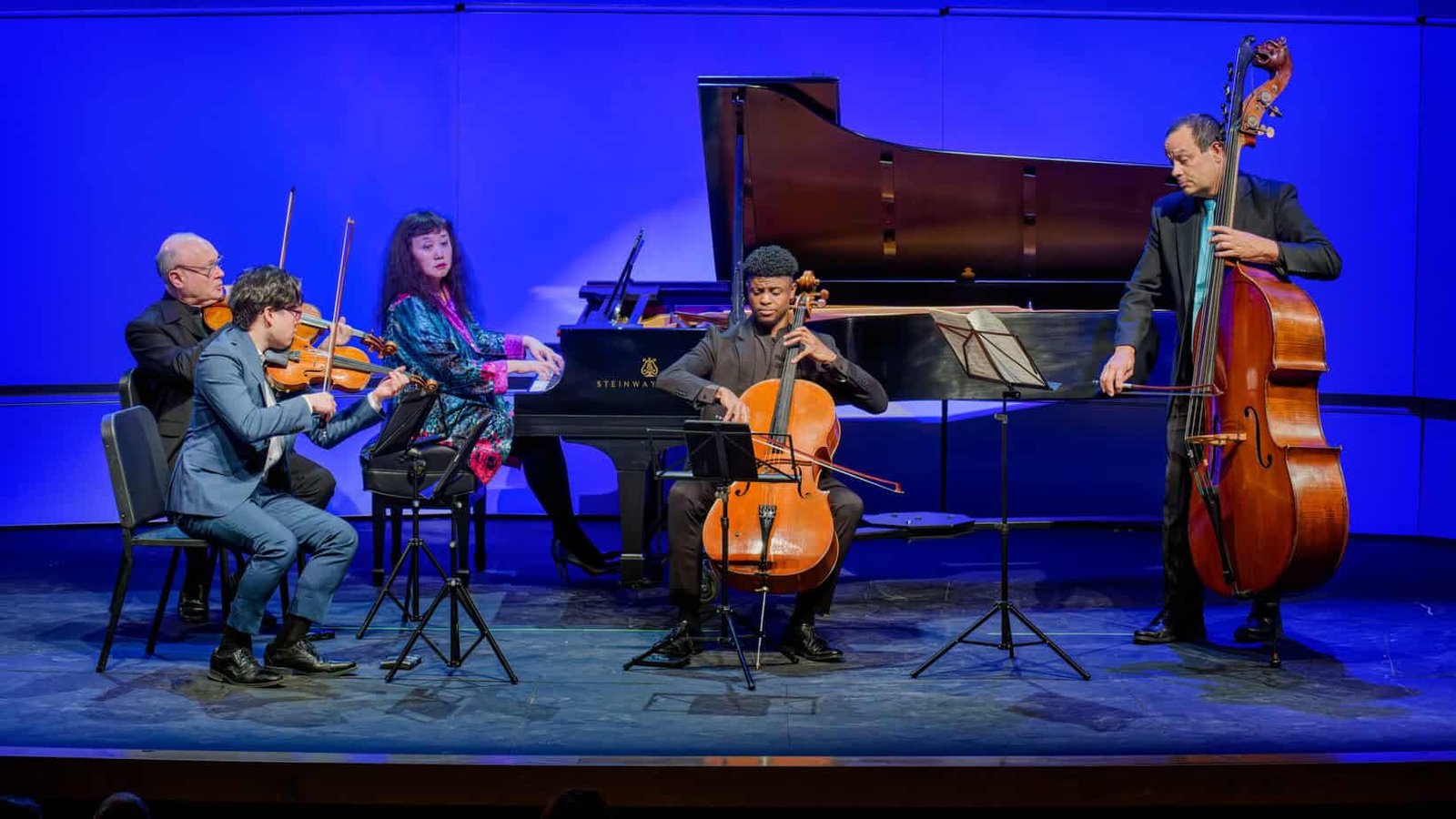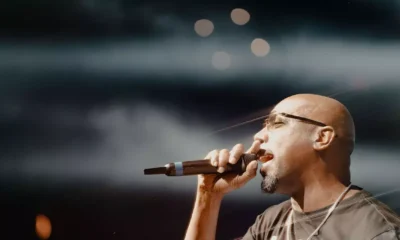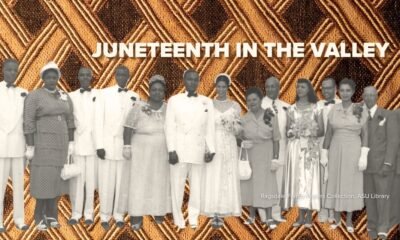arts and culture
Chamber Music Sundays: The Ultimate Civilizing Experience

The Chamber Music Society of Lincoln Center visited Chamber Music Sedona on Sunday, March 23, featuring violinists Julian Rhee and Arnaud Sussman, violist Paul Neubauer, cellist Sterling Elliott, bassist Anthony Manzo, and pianist Wu Han. The concert, held at the Sedona Performing Arts Center, showcased an impressive program highlighting two renowned composers.
In her opening remarks, Han described attending chamber music on a Sunday afternoon as “one of the most civilizing things that one can do.”
Opening Pieces
The first half of the program centered around Franz Schubert’s Trout Quintet, beginning with the works of Wolfgang Amadeus Mozart. Han noted that Schubert had a deep admiration for Mozart. The performance included the K. 404a arrangement of Wilhelm Friedemann Bach’s Fugue in F Minor, a secure attribution that preceded the masterful execution by Sussman, Neubauer, and Elliott.
With a focus on cello and viola, the fugues balanced intellectual depth with a comforting nature. Elliott’s animated style at the center of the trio caught the audience’s attention. The music transcended typical compositions of Bach’s heritage, revealing a mature character reminiscent of eighteenth-century England.
Rhee and Manzo joined forces with Elliott for Mozart’s Adagio and Fugue in C Minor, K. 546. Manzo’s powerful bass anchored the adagio while the violin’s ethereal tones conveyed a contemporary essence. The fugue expertly blended styles of both Mozart and Johann Sebastian Bach, marked by a raw, striving energy that contrasted sharply with the adagio’s more cautious exploration.
Piano Quartet
Han later joined the string ensemble for Mozart’s second piano quartet, K. 493. She excitedly explained that this was not just the second of Mozart’s piano quartets, but also the second ever written. Mozart’s response to his publisher’s criticism of his first quartet led to this work’s intricate composition.
This performance highlighted Han’s distinctive flair and artistry, captivating the audience through her nuanced phrasing. Her interaction with the violin during the first and third movements added a playful dynamic, illustrating her earlier point about the collaborative spirit of chamber music.
In the first movement, the strings exerted a comforting presence while the piano injected a lively, almost youthful energy. By the second movement, an air of mutual respect settled among the musicians, leading to refined exchanges. The third movement exploded into exuberance, with the piano glimmering like sunlight on water, sustaining a tone of hope and joy throughout.
Trout Quartet
As the group transitioned to Schubert’s Trout Quintet, the musicians appeared coordinated in their attire, reflecting the occasion’s significance. Rhee took the lead, embodying the music’s spirit with his seamless playing on a 1699 “Lady Tennant” Stradivarius. His performance resonated with effortless grace as he navigated the complexities of the piece.
The quintet unfolded as a dialogue among the piano, violin, and supporting strings, with Rhee exhibiting remarkable dexterity. The emotional interplay between wistfulness and cheer added a rich layer to the performance. Notably, Elliott showcased compelling cello passages, enhancing the piece’s texture and depth.
The concert concluded with a striking finale that cleverly lured the audience into a false finish, culminating in an exhilarating repeat of the movement, sealing the performance with dazzling artistry.
Chamber Music Sedona will close its 2024-25 season with a concert by the Pinchas Zukerman Trio on Sunday, April 13.


















